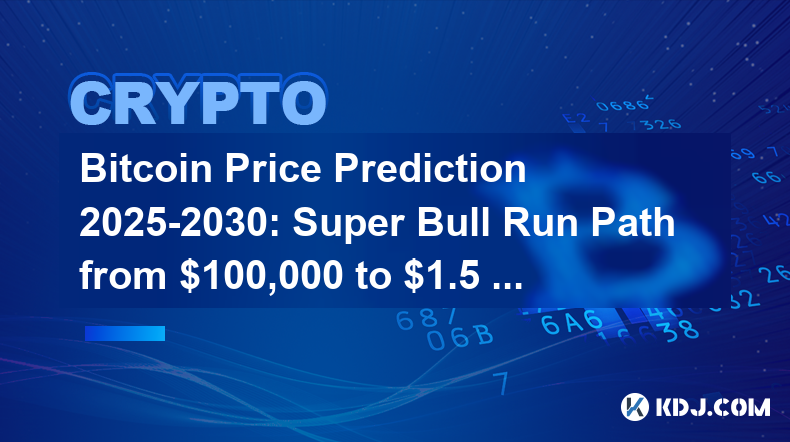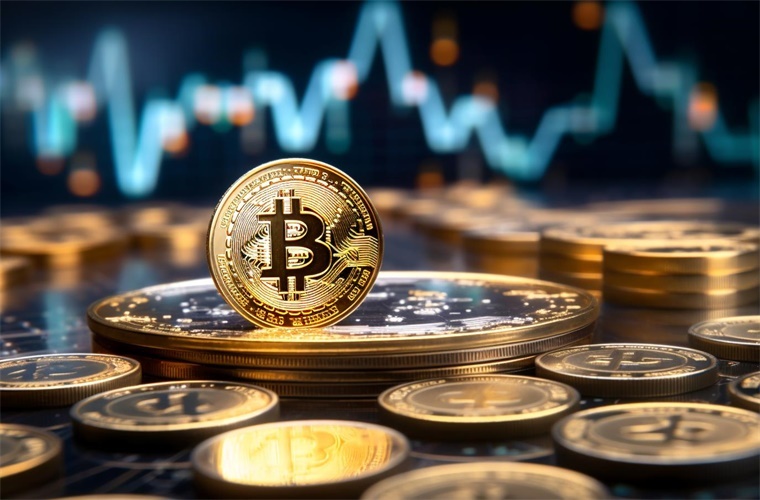-
 Bitcoin
Bitcoin $106,437.2012
0.82% -
 Ethereum
Ethereum $2,442.5287
0.82% -
 Tether USDt
Tether USDt $1.0005
-0.02% -
 XRP
XRP $2.1812
-0.27% -
 BNB
BNB $645.1327
0.45% -
 Solana
Solana $146.2379
0.39% -
 USDC
USDC $0.9999
-0.01% -
 TRON
TRON $0.2751
0.92% -
 Dogecoin
Dogecoin $0.1662
-0.23% -
 Cardano
Cardano $0.5827
-1.22% -
 Hyperliquid
Hyperliquid $37.5225
0.04% -
 Bitcoin Cash
Bitcoin Cash $479.0877
4.02% -
 Sui
Sui $2.7846
-3.27% -
 Chainlink
Chainlink $13.3576
0.84% -
 UNUS SED LEO
UNUS SED LEO $9.0252
-1.20% -
 Stellar
Stellar $0.2455
-1.07% -
 Avalanche
Avalanche $18.0680
-1.81% -
 Toncoin
Toncoin $2.8948
-1.07% -
 Shiba Inu
Shiba Inu $0.0...01164
-1.65% -
 Litecoin
Litecoin $85.0637
-0.06% -
 Hedera
Hedera $0.1526
-0.89% -
 Monero
Monero $316.2941
0.78% -
 Ethena USDe
Ethena USDe $1.0003
-0.04% -
 Polkadot
Polkadot $3.4113
-1.87% -
 Dai
Dai $1.0000
-0.01% -
 Bitget Token
Bitget Token $4.4488
5.16% -
 Uniswap
Uniswap $7.1740
3.09% -
 Pi
Pi $0.5968
11.43% -
 Pepe
Pepe $0.0...01010
-0.65% -
 Aave
Aave $264.3189
0.40%
Bitcoin Price Prediction 2025-2030: Super Bull Run Path from $100,000 to $1.5 Million
In-depth analysis of Bitcoin's price trends from 2025 to 2030, covering influencing factors such as halving and ETFs, interpreting technical indicators such as RSI, and predicting prices in stages, so as to fully present the key points of the super bull market path from 100,000 to 1.5 million US dollars for investors and cryptocurrency enthusiasts.
Mar 25, 2025 at 05:37 pm

Key factors affecting Bitcoin price trends
Bitcoin halving mechanism : Bitcoin halving is carried out every four years, which has a profound impact on the supply dynamics of Bitcoin. Taking the fourth halving on April 19, 2024 as an example, the mining rewards sharply dropped from 6.25 BTC to 3.25 BTC, directly reducing the output speed of Bitcoin. From historical experience, Bitcoin usually ushers in a price increase cycle after halving. Over time, by 2030, Bitcoin has been mined to approach 98% of the total supply cap of 21 million, and scarcity will further intensify and become the core force driving price rise.

The far-reaching impact of Bitcoin ETF : The approval of Bitcoin ETF on January 10, 2024 is a major milestone in the cryptocurrency market. This move paved the way for large-scale entry of institutional investors, and the continuous injection of ETF funds has become a key driver of the upward trend of Bitcoin prices. On January 11, 2024, 11 ETF funds attracted a lot of institutional attention as soon as they were unveiled, pushing the Bitcoin price to successfully exceed $49,000 before the announcement. According to analysts' forecast, the number of Bitcoin held by ETFs is expected to exceed 1.5 million by 2026, which will greatly increase the market demand for Bitcoin and provide solid support for prices.
The right side of macroeconomic policies : The Federal Reserve's monetary policy has a significant impact on Bitcoin prices. If the Fed cut rate slower than expected, U.S. Treasury yields may remain high, which will weaken Bitcoin’s appeal to investors, which tend to lean towards traditional fixed-income products. On the contrary, when the Fed implements loose monetary policy and market liquidity increases, Bitcoin as an investment option may receive more attention. In addition, the Trump administration's attitude towards cryptocurrencies and related policies are also of great importance. Trump’s stance on supporting cryptocurrencies and amicable regulatory commitments have greatly boosted market sentiment after the 2024 election and prompted a sharp rise in Bitcoin prices. If the Trump administration subsequently fulfills its promise to establish strategic Bitcoin reserves for the Federal Reserve, Bitcoin demand may usher in explosive growth, effectively driving price increases.
The role of market sentiment and investor confidence : Market sentiment has an important impact on Bitcoin price fluctuations in the short term. Bitcoin prices usually rise when markets show optimistic expectations of crypto policies, or when institutional investors are influx in large numbers. In January 2025, Bitcoin hit a new high of $109,140 due to investors' optimistic expectations for pro-cryptocurrency policies. On the contrary, once negative news comes out in the market, such as unclear regulatory policies and the Senate boycott of cryptocurrency legislation, it may trigger market panic and lead to a decline in Bitcoin prices. On December 24, 2024, Bitcoin fell by about 13% from its historical high due to changes in monetary policy and profit-taking.
Interpretation of technical analysis indicators of Bitcoin price
Relative Strength Index (RSI) : The current RSI value is 76, and it has entered the overbought area. Generally speaking, when the RSI exceeds 70, the market is in an overbought state, which means that the price of Bitcoin may rise excessively and there is a risk of a pullback. However, in a strong uptrend, the price of Bitcoin may also continue in the overbought area for some time. Therefore, investors need to combine other indicators to comprehensively judge market trends.
Stochastic %K and Commodity Channel Index (CCI) : The Stochastic %K value is 88, and the CCI reaches 163. Both indicators indicate potential selling pressure in the market. A higher Stochastic %K value indicates that the market is rising too quickly in the short term and may face adjustments. The CCI indicator reaches 163, indicating that the market price deviates from the normal range, also implying that the market may have a reversal or pullback.
MACD indicator : The MACD indicator value is 15,460, which confirms that the bull momentum remains strong. The MACD indicator is an important tool for judging market trends. When the MACD value is positive and the upward trend is on, it indicates that the market bulls dominate and the Bitcoin price is expected to continue to rise. In Bitcoin price analysis, this performance of the MACD indicator provides strong support for the bull trend.
Moving average system : both short-term moving averages (EMA - 10:76,932) and long-term moving averages (SMA - 30:45,568) show a significant upward trend, and all moving averages are above key support levels, and the Hull moving average (100,746) also supports the current bullish trend. The moving average system can reflect the average cost and trend direction of the market. The short-term moving average is above the long-term moving average and is showing an upward trend, indicating that the market is in a bullish atmosphere in the short term and long term, and the forces of the multi-party have the advantage. The support of Hull moving average further consolidates the current bullish trend and provides an important reference for investors to judge market trends.
Average Directional Index (ADX) : The ADX value is 38, indicating that the current trend is weak and investors need to be vigilant about possible reversals. ADX is mainly used to measure the strength of market trends. When the ADX value is low, it means that the market trend is not strong enough and may reverse at any time. In Bitcoin price analysis, although it is currently in a bullish trend, the low ADX value suggests that investors should not ignore the possibility of market reversal and should pay close attention to market trends.
2025-2030 Bitcoin Price Phase Prediction
Price forecast for 2025 : According to analysts such as Bitwise, Standard Chartered Bank and VanEck, the price of Bitcoin is expected to reach US$180,000-200,000 in 2025. In 2024, Bitcoin ETFs were approved, institutional funds inflows, MicroStrategy increased its holdings, Bitcoin halved, and the acceptance of Bitcoin by enterprises and countries all provide support for its price increase. BitVM's Layer 2 extension and Babylon-supported staking functionality also enhance the practicality of Bitcoin. However, factors such as the Federal Reserve's interest rate cuts are less than expected, high Treasury yields, unclear regulation and Senate resistance will also pose certain risks. The market expects the average price of Bitcoin to be $160,000 in 2025, with a maximum of $200,000 and a minimum of $87,000.

2026 Price Forecast : In 2026, institutional adoption and new technologies are the main driving force for Bitcoin prices. Bitwise and VanEck analysts expect ETF funds to continue to flow in, with their Bitcoin holdings likely to exceed 1.5 million, and the holdings of listed companies may also exceed Satoshi Nakamoto. (Donald Trump) Under the government regulatory framework, stablecoins and blockchain legislation can enhance institutional confidence, the United States establishes strategic reserves of Bitcoin, and also stimulates price growth, and the progress of Bitcoin programmability creates new scenarios. But Ethereum and Solana compete fiercely in programmability and DeFi. At the macroeconomic level, higher Treasury yields and Fed interest rate hikes will withdraw funds, and global regulatory uncertainty and U.S. restrictive policies will also hinder development. Overall, the price of Bitcoin in 2026 may reach $179,922.44 and the lowest is $117,955.19, with an average price of about $148,938.81.
2030 Price Forecast : By 2030, Bitcoin prices will be dominated by supply constraints, institutional adoption and macroeconomic factors. Jack Dorsey and Cathie Wood respectively predict that Bitcoin will exceed 1 million and 1.5 million US dollars, which is based on ETF inflows, increased global adoption and the consolidation of Bitcoin's "digital gold" status. At that time, Bitcoin was close to the upper limit of 21 million coins, and 98% of them had been mined, which intensified its scarcity. Demand from ETFs, businesses and sovereign states may accelerate coin hoarding, and countries such as El Salvador will lead the adoption trend. The direction of US policy, such as establishing national Bitcoin reserves under the Trump administration, is a potential variable. Technically, Bitcoin L2 expansion solution may open up new application scenarios to stimulate demand. However, central bank digital currency (CBDC), tightening of supervision, and flow of funds to safe-haven assets are the main risks. Although Bitcoin may reach a valuation of US$1 million in 2030, it faces volatility and regulatory risks, which may curb institutional capital inflows. Overall, the average Bitcoin price in 2030 is expected to be $809,985.86, with a maximum of $1,853,051.45 and a minimum of $300,294.03.
Disclaimer:info@kdj.com
The information provided is not trading advice. kdj.com does not assume any responsibility for any investments made based on the information provided in this article. Cryptocurrencies are highly volatile and it is highly recommended that you invest with caution after thorough research!
If you believe that the content used on this website infringes your copyright, please contact us immediately (info@kdj.com) and we will delete it promptly.
- Ripple, Bitcoin, and Crypto History: Unearthing the Roots of Digital Finance
- 2025-06-25 20:25:12
- XRP Price ATH Breakout: Will XRP Hit $7 or Even $27?
- 2025-06-25 20:25:12
- BTC/USD Bull Run: Navigating Cryptocurrency's Geopolitical Tides and Meme Coin Mania
- 2025-06-25 20:30:12
- Dogecoin's Crossroads: Buy Signal or Risky Business?
- 2025-06-25 18:25:12
- Aptos (APT) Price Rally: Bulls Eyeing $7 After Bullish Breakout
- 2025-06-25 18:45:12
- Mastercard, Chainlink, and Bitcoin: A New York Minute on the Future of Finance
- 2025-06-25 19:05:12
Related knowledge

How to customize USDT TRC20 mining fees? Flexible adjustment tutorial
Jun 13,2025 at 01:42am
Understanding USDT TRC20 Mining FeesMining fees on the TRON (TRC20) network are essential for processing transactions. Unlike Bitcoin or Ethereum, where miners directly validate transactions, TRON uses a delegated proof-of-stake (DPoS) mechanism. However, users still need to pay bandwidth and energy fees, which are collectively referred to as 'mining fe...

USDT TRC20 transaction is stuck? Solution summary
Jun 14,2025 at 11:15pm
Understanding USDT TRC20 TransactionsWhen users mention that a USDT TRC20 transaction is stuck, they typically refer to a situation where the transfer of Tether (USDT) on the TRON blockchain has not been confirmed for an extended period. This issue may arise due to various reasons such as network congestion, insufficient transaction fees, or wallet-rela...

How to cancel USDT TRC20 unconfirmed transactions? Operation guide
Jun 13,2025 at 11:01pm
Understanding USDT TRC20 Unconfirmed TransactionsWhen dealing with USDT TRC20 transactions, it’s crucial to understand what an unconfirmed transaction means. An unconfirmed transaction is one that has been broadcasted to the blockchain network but hasn’t yet been included in a block. This typically occurs due to low transaction fees or network congestio...

How to check USDT TRC20 balance? Introduction to multiple query methods
Jun 21,2025 at 02:42am
Understanding USDT TRC20 and Its ImportanceUSDT (Tether) is one of the most widely used stablecoins in the cryptocurrency market. It exists on multiple blockchain networks, including TRC20, which operates on the Tron (TRX) network. Checking your USDT TRC20 balance accurately is crucial for users who hold or transact with this asset. Whether you're sendi...

What to do if USDT TRC20 transfers are congested? Speed up trading skills
Jun 13,2025 at 09:56am
Understanding USDT TRC20 Transfer CongestionWhen transferring USDT TRC20, users may occasionally experience delays or congestion. This typically occurs due to network overload on the TRON blockchain, which hosts the TRC20 version of Tether. Unlike the ERC20 variant (which runs on Ethereum), TRC20 transactions are generally faster and cheaper, but during...

The relationship between USDT TRC20 and TRON chain: technical background analysis
Jun 12,2025 at 01:28pm
What is USDT TRC20?USDT TRC20 refers to the Tether (USDT) token issued on the TRON blockchain using the TRC-20 standard. Unlike the more commonly known ERC-20 version of USDT (which runs on Ethereum), the TRC-20 variant leverages the TRON network's infrastructure for faster and cheaper transactions. The emergence of this version came as part of Tether’s...

How to customize USDT TRC20 mining fees? Flexible adjustment tutorial
Jun 13,2025 at 01:42am
Understanding USDT TRC20 Mining FeesMining fees on the TRON (TRC20) network are essential for processing transactions. Unlike Bitcoin or Ethereum, where miners directly validate transactions, TRON uses a delegated proof-of-stake (DPoS) mechanism. However, users still need to pay bandwidth and energy fees, which are collectively referred to as 'mining fe...

USDT TRC20 transaction is stuck? Solution summary
Jun 14,2025 at 11:15pm
Understanding USDT TRC20 TransactionsWhen users mention that a USDT TRC20 transaction is stuck, they typically refer to a situation where the transfer of Tether (USDT) on the TRON blockchain has not been confirmed for an extended period. This issue may arise due to various reasons such as network congestion, insufficient transaction fees, or wallet-rela...

How to cancel USDT TRC20 unconfirmed transactions? Operation guide
Jun 13,2025 at 11:01pm
Understanding USDT TRC20 Unconfirmed TransactionsWhen dealing with USDT TRC20 transactions, it’s crucial to understand what an unconfirmed transaction means. An unconfirmed transaction is one that has been broadcasted to the blockchain network but hasn’t yet been included in a block. This typically occurs due to low transaction fees or network congestio...

How to check USDT TRC20 balance? Introduction to multiple query methods
Jun 21,2025 at 02:42am
Understanding USDT TRC20 and Its ImportanceUSDT (Tether) is one of the most widely used stablecoins in the cryptocurrency market. It exists on multiple blockchain networks, including TRC20, which operates on the Tron (TRX) network. Checking your USDT TRC20 balance accurately is crucial for users who hold or transact with this asset. Whether you're sendi...

What to do if USDT TRC20 transfers are congested? Speed up trading skills
Jun 13,2025 at 09:56am
Understanding USDT TRC20 Transfer CongestionWhen transferring USDT TRC20, users may occasionally experience delays or congestion. This typically occurs due to network overload on the TRON blockchain, which hosts the TRC20 version of Tether. Unlike the ERC20 variant (which runs on Ethereum), TRC20 transactions are generally faster and cheaper, but during...

The relationship between USDT TRC20 and TRON chain: technical background analysis
Jun 12,2025 at 01:28pm
What is USDT TRC20?USDT TRC20 refers to the Tether (USDT) token issued on the TRON blockchain using the TRC-20 standard. Unlike the more commonly known ERC-20 version of USDT (which runs on Ethereum), the TRC-20 variant leverages the TRON network's infrastructure for faster and cheaper transactions. The emergence of this version came as part of Tether’s...
See all articles
























































































